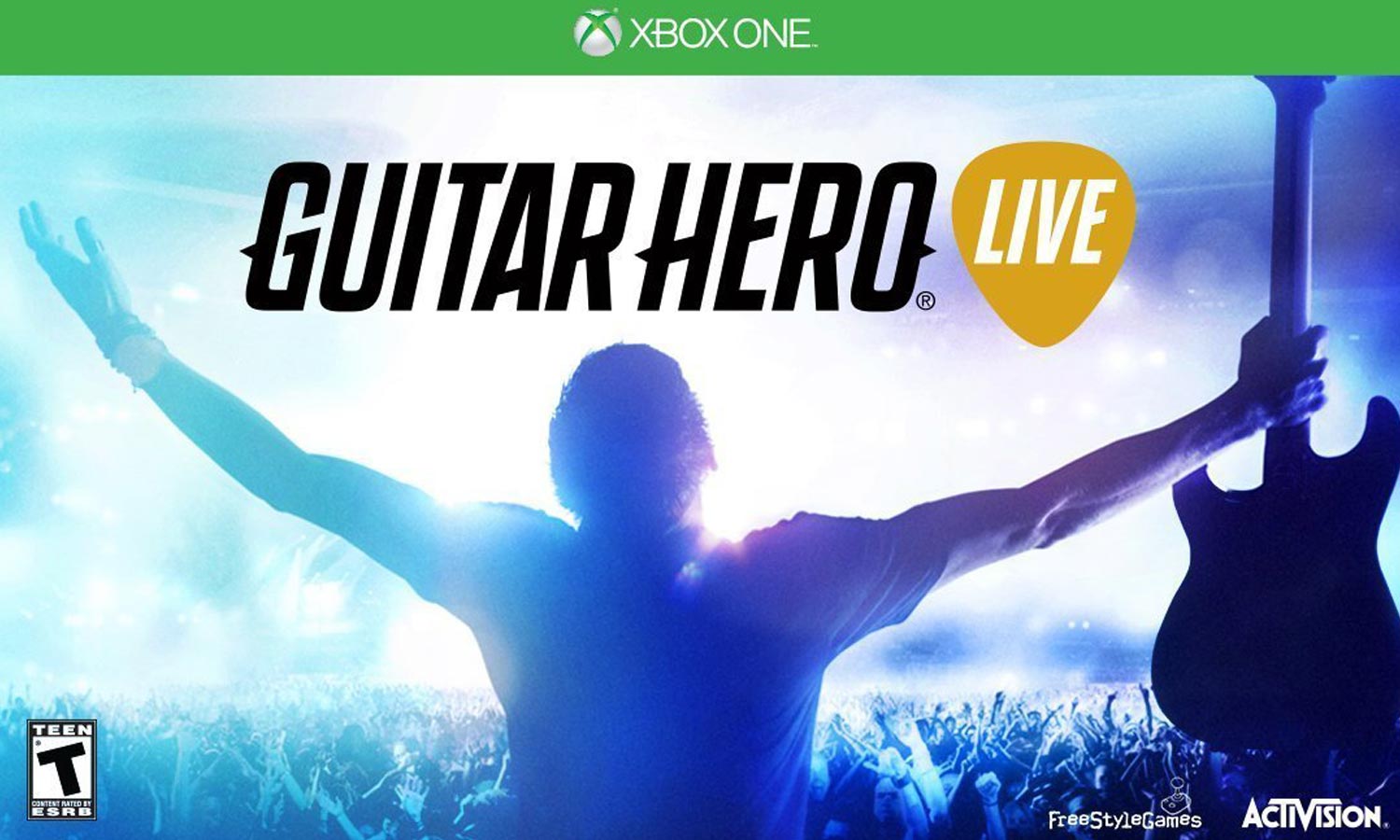Guitar Hero Live vs. Rock Band 4: Face-Off
Guitar Hero and Rock Band are still the two biggest names in rhythm gaming, but they're not as similar as they used to be.
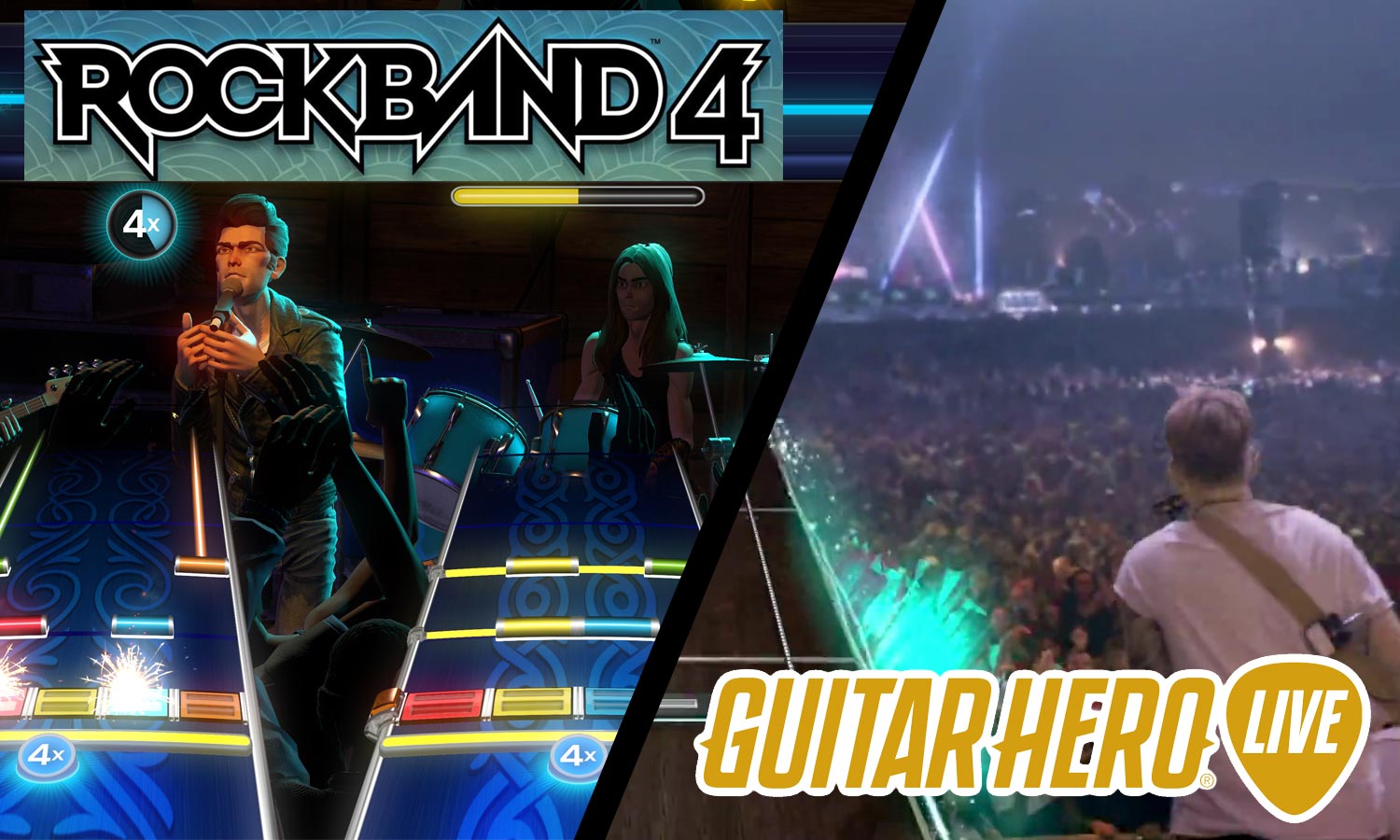
Yes, you read that headline right — and no, you haven't traveled back to 2008. Guitar Hero and Rock Band are both back on store shelves after nearly half a decade's absence, and the rivalry is poised to start all over again. The games aren't as similar as they used to be, but they're still the biggest names in rhythm gaming. So, which one is better?
In one corner, there's Guitar Hero Live ($100 for the game, plus a guitar): a mostly single-player affair that introduces a brand-new controller and a first-person perspective with reactive live footage for every song. In the other corner, there's Rock Band 4 ($250 for the game, plus a guitar, microphone and drum kit): a multiplayer extravaganza that lets up to four players form a full band. Guitar Hero Live is available for PlayStation 3, PS4, Xbox 360, Xbox One, Wii U and iOS, while Rock Band 4 is available only for PS4 and Xbox One.
Both games are expensive and will take up a lot of space in your home. You'll probably want to pick up only one or the other, at least for the time being. To learn which game will rock your world, read on.
Controller
The rock star fantasy just isn't the same if you're stuck with a regular controller. Both Rock Band 4 and Guitar Hero Live have their own spin on plastic-instrument controllers, but the former is starting to show its age.
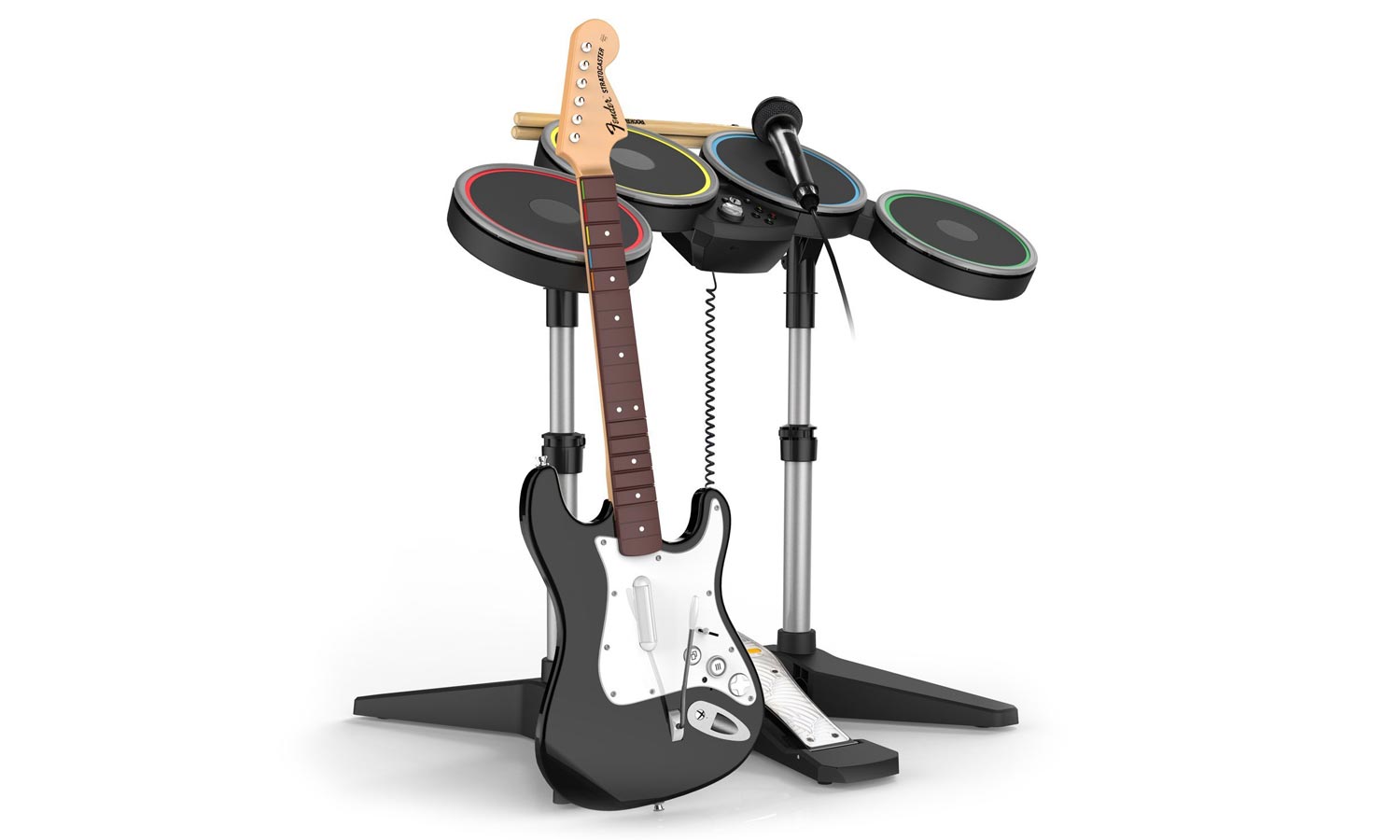
Rock Band players will instantly recognize what comes in the box: a guitar controller with 10 colored frets, a drum controller with four colored pads and a bass pedal, and a microphone that plugs into the console — the only wired part of the ensemble. For better or worse, the instruments feel exactly the same as they did when Rock Band debuted eight years ago.
I hated how mushy the strum bar on the Rock Band guitar felt back in 2007, and time has not softened my opinion. The drum controller, on the other hand, is a gorgeous piece of design, and could conceivably give new players a fairly good grip on how to play an actual drum kit. The microphone works in-game; however, it doesn't actually amplify your voice, so don't expect your vocals to rise up over the real-life crowd at a party.
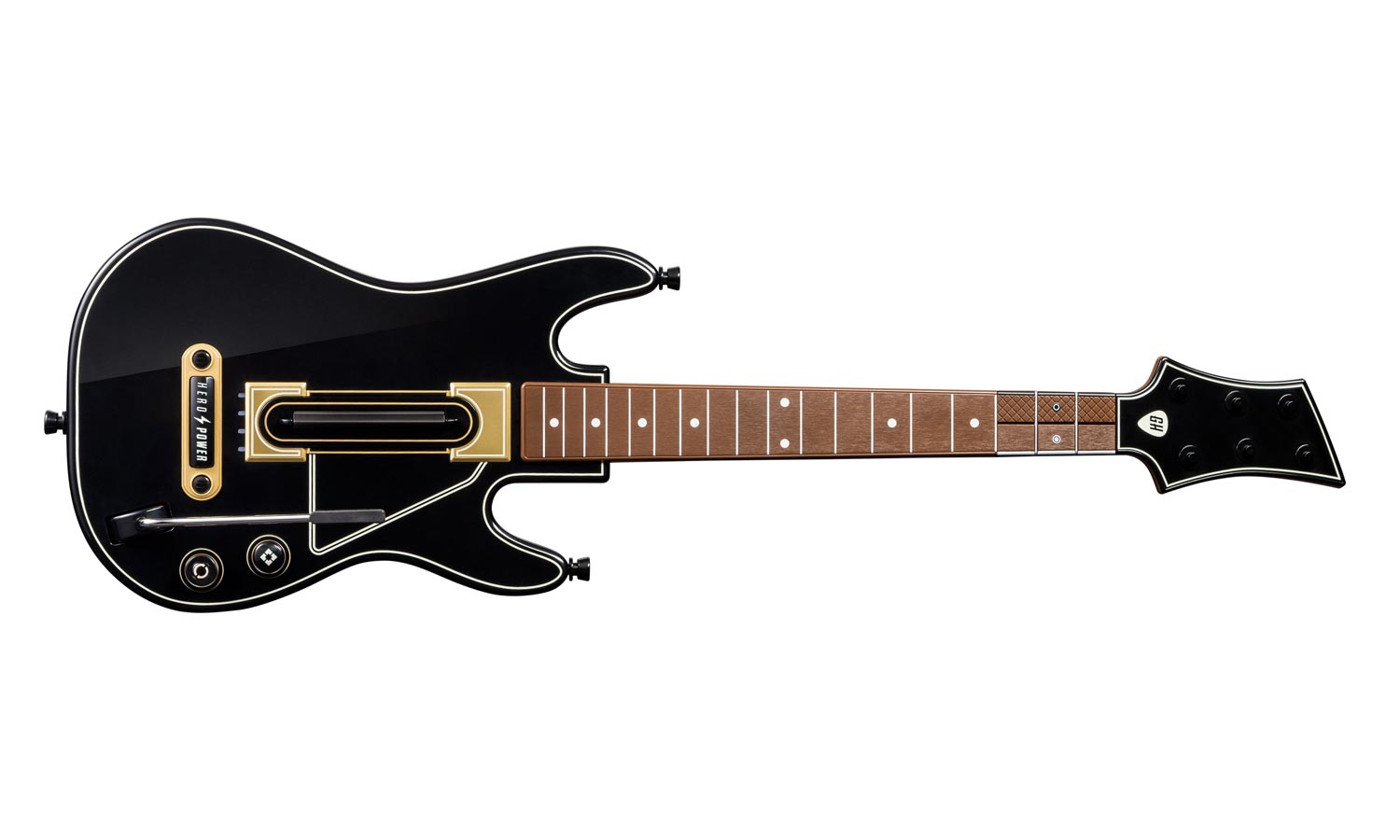
The Guitar Hero controller, on the other hand, takes considerable departures from its predecessors. Rather than five colored buttons, you get two rows of three buttons apiece. The top row is white, the bottom is black, and you play notes by matching both color and position. As before, the strum bar has an audible, tactile "click" that helps you know when you've hit a note properly.
Sign up to get the BEST of Tom's Guide direct to your inbox.
Get instant access to breaking news, the hottest reviews, great deals and helpful tips.
Although it takes some time to get used to the six-button design, it actually makes a lot more sense than the five-button configuration. A guitar has six strings, so why not use six buttons to simulate one? Having two rows means you can use the same three fingers for all six of them, rather than slide your hand up and down the neck constantly.
MORE: Most Anticipated Games
The biggest advantage of the Guitar Hero controller, however, is the clicking strum bar. That kind of aural feedback goes a long way in a rhythm game.
Winner: Guitar Hero Live With its clicking strum bar and clever new design, the Guitar Hero Live controller takes some getting used to, but feels like the more responsive of the two.
Music Selection (Included)
After three games and mountains of downloadable content (DLC), Rock Band 4 is starting to scrape the bottom of the barrel for popular musicians. Van Morrison's "Brown Eyed Girl" and Mark Ronson's "Uptown Funk" may be fun to listen to, but they're not a ton of fun to play.
Metalheads will know "Prayer" by Disturbed and "Miracle Man" by Ozzy Osbourne. Ditto for pop-rock fans and "Still Into You" by Paramore and "Centuries" by Fall Out Boy. But you'll probably recognize just a handful of songs, and they're not as good as the songs from previous games.
The games aren't as similar as they used to be, but they're still the biggest names in rhythm gaming.
There are, of course, mitigating factors for Rock Band 4's disappointing song selection. The game makers expect that you either have the songs from the first three games stockpiled, a mountain of DLC, or both. If you bought the first three Rock Band games, you can (eventually) transfer all of your songs to Rock Band 4. Most of the songs you already bought in the DLC shop are available, too, provided that the licenses have not expired.
The problem is that the song-transfer process is a confusing mess. Rock Band developer Harmonix detailed the process on its website, and if you can work your way through the disc-export chart, you'll learn a few interesting things. Rock Band 4 will support music from Rock Bands 1, 2 and 3; Lego; Green Day; and a number of track packs — someday. However, that's only if you've already transferred them to Rock Band 3. The licenses for exportation have expired, you see. Furthermore, if you didn't buy Rock Band 3 prior to Oct. 30, 2015, you are similarly out of luck; Harmonix can no longer sell it.
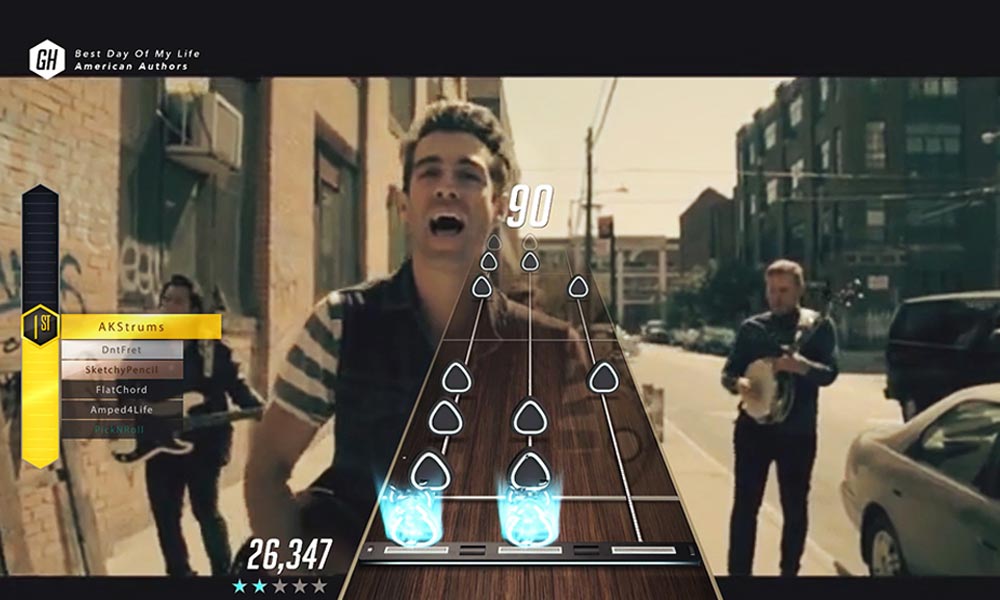
Guitar Hero Live doesn't mess around by trying to offer any songs from previous generations, and while this means it has a much smaller potential track list, it also keeps the game very clean and manageable. (The new control scheme would also preclude older tracks by design.)
The game comes with about 40 tracks in its Live mode (with more in its TV mode, explained below), compared to Rock Band 4's 80 or so, but the songs are generally much better. "Paint It Black" by The Rolling Stones, "Tie Your Mother Down" by Queen, "When You Were Young" by The Killers and "The Anthem" by Good Charlotte are all recognizable choices, and the rest of the soundtrack provides a good mix of genres and artists, from Mumford & Sons to Pearl Jam to Arctic Monkeys.
Winner: Guitar Hero Live While Guitar Hero Live has fewer tracks, the game also feels more focused, and generally culls better music from a given band's discography. At the very least, you can access your entire music library without having to grapple with arcane licensing practices.
Single Player
Guitar Hero has always been more of a single-player experience, while Rock Band has been more multiplayer-focused, and that's still true in this latest generation. While you can play by yourself in Rock Band 4, there's no real motivation to do so. All of the multiplayer options are still available. You can create a band and go on tour, play a set for fun and profit, or just quick-play individual songs. All of the songs are available right from the get-go, however, so there's not much sense of progression.
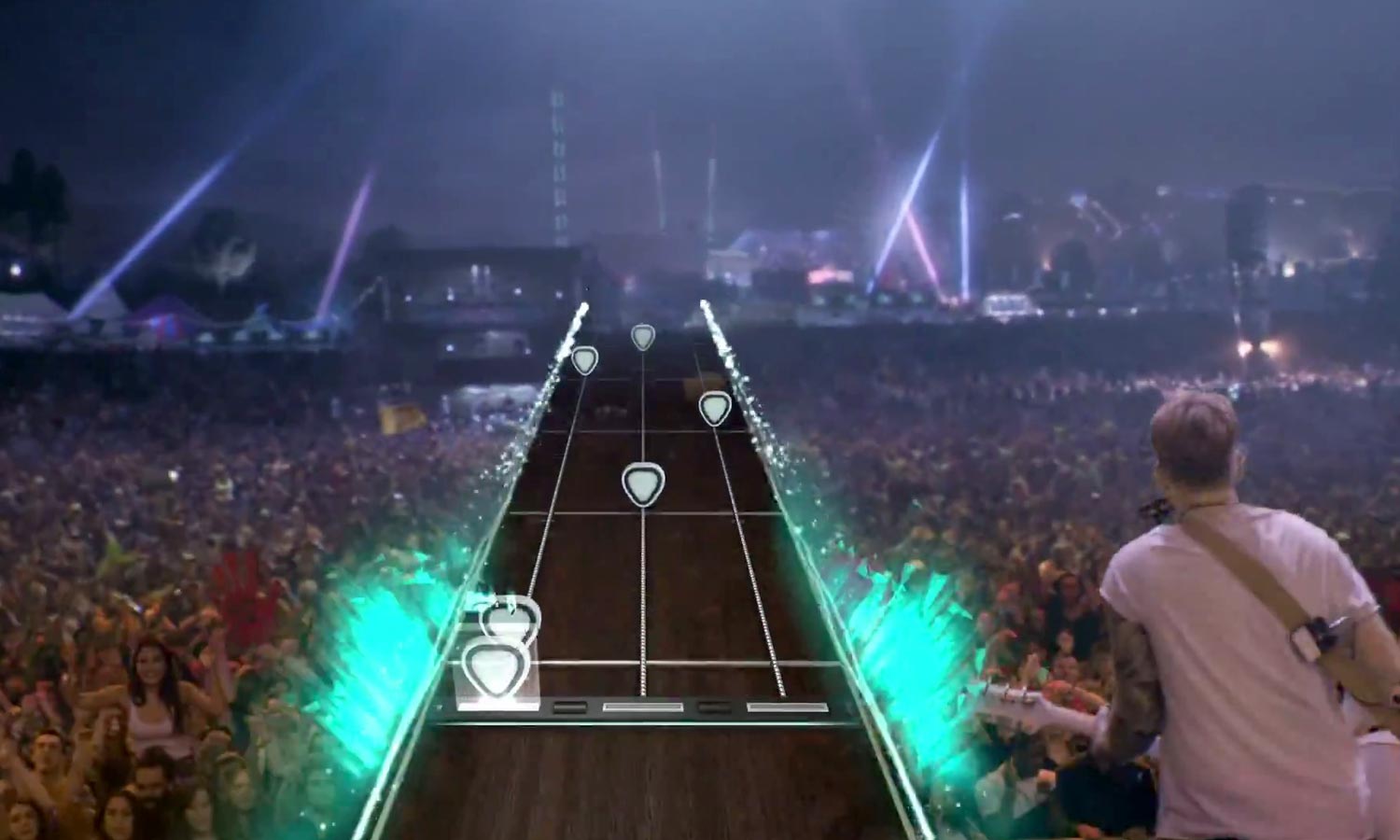
Guitar Hero Live, on the other hand, puts you front and center in your own personal rock-star fantasy. Every single song comes with a first-person video recording of a real band and real audience members. Play well, and you'll be rewarded with happy bandmates and a screaming audience. Mess up, and your bandmates will glare contemptuously, and the audience members will stand, staring at you, with their arms crossed. Go a step further, and they'll boo you offstage. Your band and the audience react within seconds to your successes and mistakes, and the sheer amount of work that must have gone into making three or four different recordings for each song is impressive in and of itself.
The rock star fantasy just isn't the same if you're stuck with a regular controller.
It's amazing how much difference a simple perspective shift from third- to first-person can make a tired franchise like Guitar Hero feel fresh again, but FreeStyle Games certainly pulled it off. You'll play a variety of fictional music festivals and venues as you build up your cred as a certified axe-handler, and each success unlocks new music.
Winner: Guitar Hero Live The traditional skill progression, coupled with a setting that reacts to you in real time, makes Guitar Hero Live the superior choice if you want to kick back and play some tunes by yourself.
Multiplayer
Guitar Hero Live has a multiplayer component, even though the game doesn't do much to highlight it. If you connect a second controller, you and your friend can play tracks together, although you'll both be playing the same thing. The only real advantage of playing together is getting an increased score; it doesn't have the refined guitar/bass duos of earlier Guitar Hero games, nor their competitive modes. You can hook up a mic as well and sing along as lyrics appear on-screen. It's functional but seems like more of an afterthought.
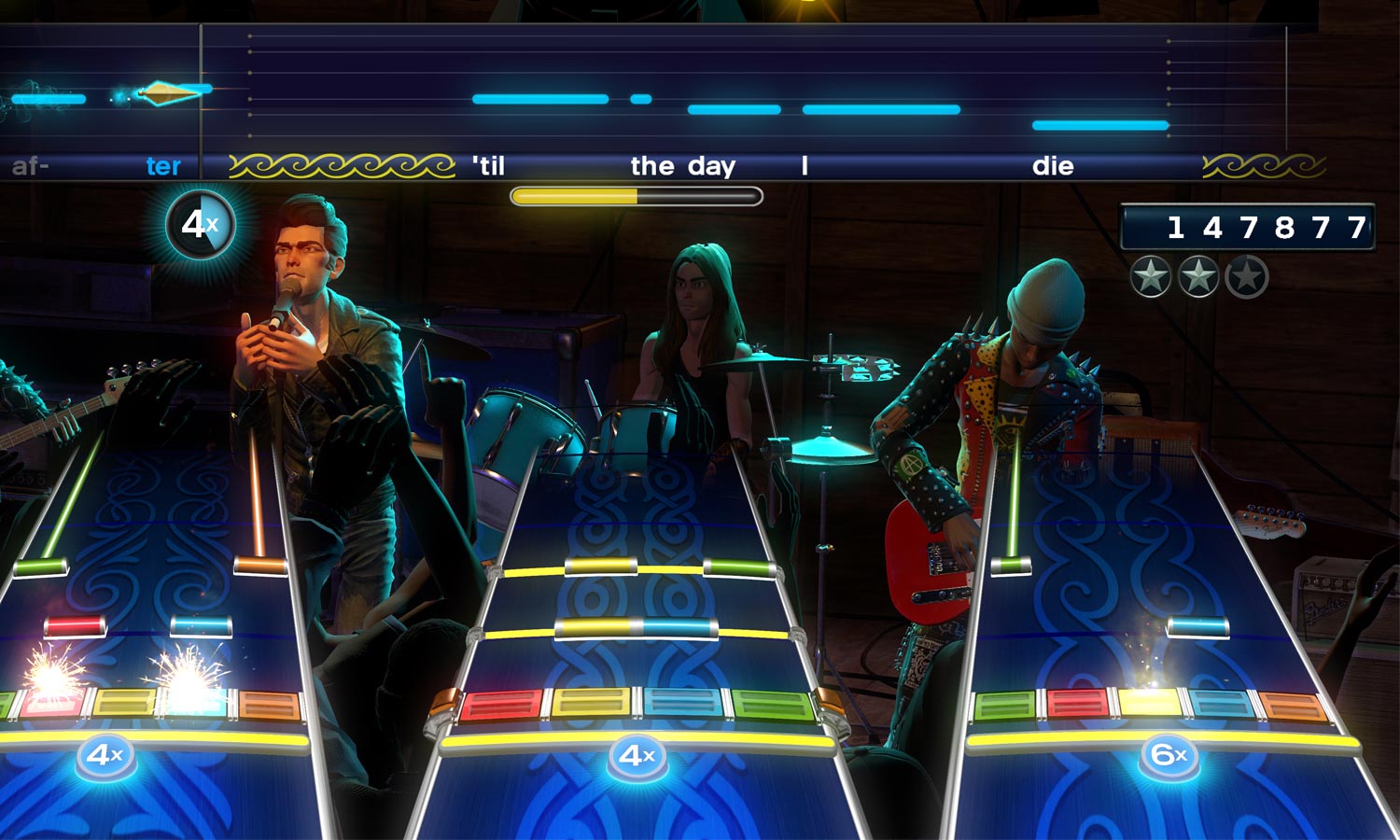
Rock Band 4 still has a huge advantage when it comes to multiplayer. It supports four players instead of three, and you can even go up to seven with additional microphones and harmony parts. Having each player take a unique role — guitar, bass, drums or vocals — helps you feel like members of a real band, and there are plenty of opportunities to collaborate. Rock Band 4's new Freestyle Solos allow you to make up material on the fly during certain sections, and every instrument gets a chance to try it out. It's the kind of emergent gameplay that creates unforgettable moments among friends, or breaks the ice between total strangers at a party.
Winner: Rock Band 4 You could play Guitar Hero Live with two or three players, but there's not much reason to. Likewise, you could play Rock Band 4 with less than a full band, but you'd be missing out.
Downloadable Content
Although the focus in Guitar Hero Live is on the live shows (as the title suggests), there's one other way to play the game: Guitar Hero TV. This unique game mode allows you to download new tracks and play along with their music videos going in the background. It has a very MTV feel to it, if you grew up back when MTV played actual music. You can jump into GHTV at any time, and tune in to "channels" that play streams of music videos. You can play along in real time for free, or purchase credits (ranging from $1 to $100; the mathematics of converting money to plays gets a little arbitrary) to access the songs at-will.
To be fair, you can also earn credits by playing along with the live tracks. You never own songs outright, however, which seems like a problem just waiting to happen. All in all, it's a clever system that's sure to provide some fun beyond the constraints of the core game.
MORE: PS4 vs. Xbox One: Which Console Is Right for You?
Guitar Hero Live simply can't compete with Rock Band 4 when it comes to the sheer breadth of downloadable content, though. While Harmonix is still fine-tuning some songs as it makes its journey from last-gen to current-gen consoles, there are almost 2,000 songs in the Rock Band DLC library from which to choose. If you already purchased them for the Xbox 360 or PS3, they will carry over to the Xbox One or PS4, respectively, free of charge. (Unfortunately, there are no cross-platform transfers.)
The breadth of songs you can buy via Rock Band 4 is staggering. You can purchase full albums from bands like Boston, Guns N' Roses and even Spinal Tap, with prices ranging from $2 for individual tracks up to $20 for albums. If you want to download country music, Southern blues, electronica, pop or even the soundtrack from Spongebob Squarepants, Rock Band 4 has you covered.
Winner: Rock Band 4 While Guitar Hero TV is the more innovative of the two services, a rhythm game is all about the music. If you're willing to shell out money for DLC, Rock Band's selection is unassailable.
Bottom Line
Think of Guitar Hero Live and Rock Band 4 like pieces of footwear. Rock Band 4 is like slipping on a favorite old pair of slippers: They're still comfortable, but they're a little worn in places and perhaps not quite as supportive as you remembered. Guitar Hero Live is a new pair of sneakers — they're exciting and flashy, but they'll definitely need to be broken in.
Although Rock Band 4 still has its charms, especially if you want to play with a large group of friends, Guitar Hero Live feels like the more polished and innovative game overall. The live audience reactions are a fantastic new addition to gameplay, and the new controller combines classic Guitar Hero precision with a smart new control scheme.
So, will these two games kick off a new era of rhythm gaming, or prove to be one-hit wonders? As a wise man once said, "All we need is just a little patience."
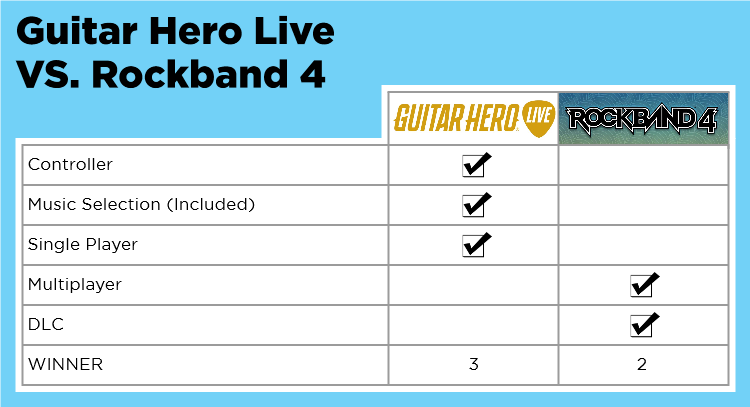
Marshall Honorof is a senior editor for Tom's Guide, overseeing the site's coverage of gaming hardware and software. He comes from a science writing background, having studied paleomammalogy, biological anthropology, and the history of science and technology. After hours, you can find him practicing taekwondo or doing deep dives on classic sci-fi.
